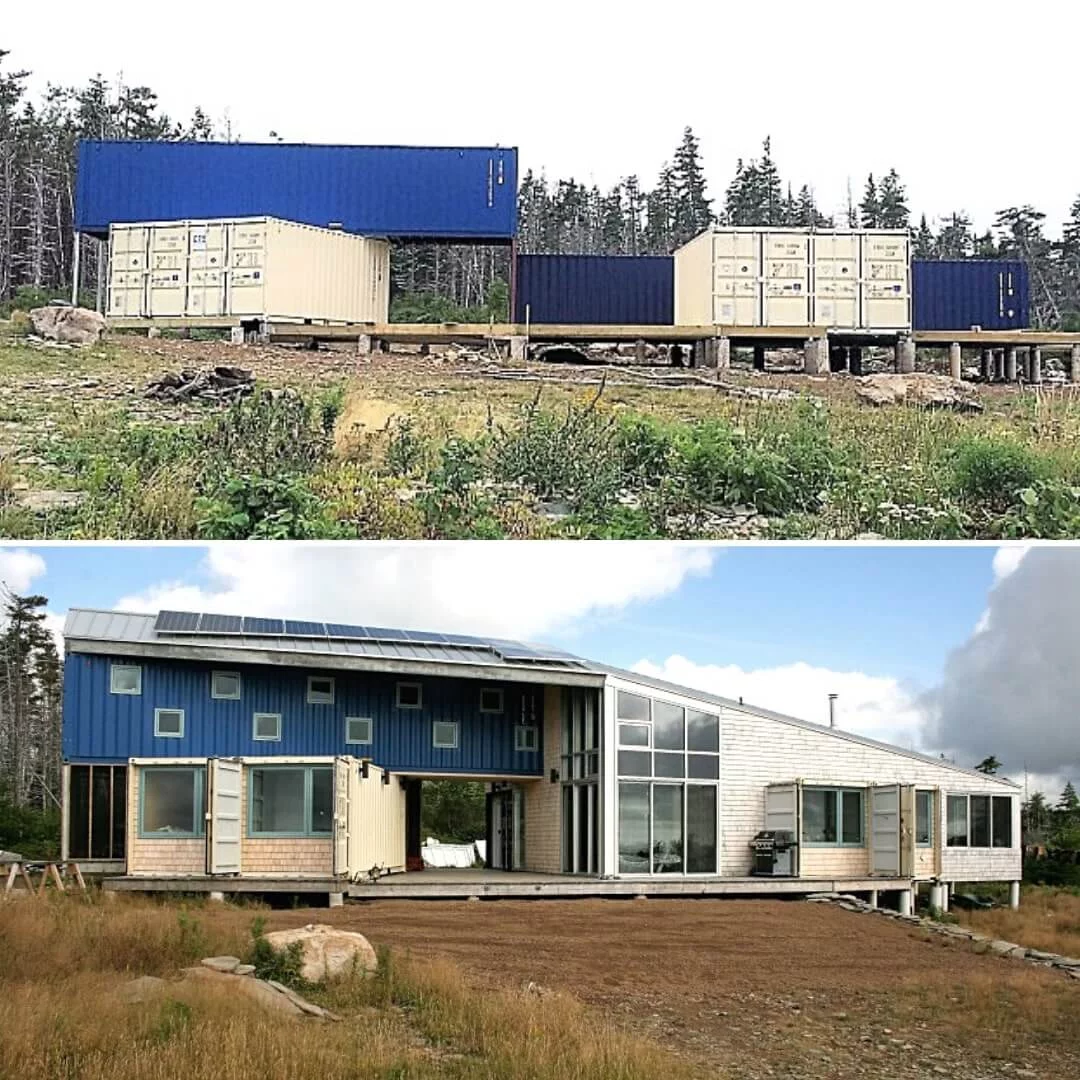Top 14 Craziest Before-and-After Container Home Makeovers
Shipping containers, those unassuming metal boxes typically used for transporting goods across oceans, have undergone a remarkable transformation and are now at the forefront of one of the most exciting trends in modern architecture: container homes.
These robust steel structures, originally designed for the harsh conditions of sea transport and the rough handling of ports and freight yards, are being reimagined in ways that defy their humble origins.
What was once considered industrial waste or merely utilitarian storage is now a canvas for architectural creativity and sustainable living.
The adaptability and durability of shipping containers make them an ideal base for innovative design, allowing architects and builders to craft everything from minimalist tiny homes to expansive multi-container mansions.
Each container provides a modular unit that can be stacked, combined, or modified in numerous ways, offering an endless array of possibilities for both function and form.
The appeal of container homes extends beyond their aesthetic versatility.
They are also championed for their environmental benefits, as repurposing these containers reduces the demand for traditional construction materials and helps to alleviate the growing problem of unused containers cluttering shipyards worldwide.
By giving these structures a second life, container homes align with the principles of sustainability and resource efficiency, making them a popular choice among eco-conscious homeowners.
Moreover, the inherent strength of the steel used in shipping containers provides a sturdy, resilient framework that can withstand extreme weather conditions, offering peace of mind to those living in areas prone to natural disasters.
Their compact size and modular nature also make them a perfect fit for urban settings, where space is at a premium and innovative housing solutions are in high demand.
In essence, the evolution of shipping containers from cargo carriers to chic, livable spaces exemplifies the power of human ingenuity and the potential for reimagining everyday objects into extraordinary solutions for modern living.
These transformations are more than just a trend; they are a testament to the growing movement towards sustainable, innovative, and versatile architectural practices.














The Process Behind the Transformations
Step 1: Vision and Design
Every remarkable transformation begins with a vision. Architects and designers take the basic structure of a container and reimagine it as a functional and aesthetically pleasing living space.
The design phase often involves 3D modeling and simulations to maximize space usage and ensure structural integrity.
Step 2: Structural Modifications
Containers are not originally designed for habitation, so modifications are necessary.
This includes cutting out spaces for windows and doors, reinforcing the structure to handle new stress points, and insulating the container to make it habitable in various climates.
Step 3: Interior and Exterior Finishing
The interiors of these container homes are often finished with high-quality materials to ensure comfort and durability.
Exterior treatments may include painting, cladding, or applying protective coatings to shield against weather conditions.
Step 4: Sustainable Features
Many container homes incorporate sustainable features such as solar panels, green roofs, and rainwater collection systems.
These features not only reduce the environmental impact but also lower ongoing utility costs for homeowners.
Why Container Homes?
Sustainability: Repurposing shipping containers reduces waste and makes use of an abundant resource.
When paired with eco-friendly features, container homes can significantly lower the carbon footprint of housing.
Cost-Effectiveness: Building with containers can be more affordable than traditional construction, especially when utilizing recycled materials.
This makes container homes an attractive option for budget-conscious buyers.
Unique Aesthetics: The industrial look of shipping containers appeals to those seeking a modern, minimalist aesthetic.
With creative design, these homes can be as beautiful as they are functional.
Versatility: Shipping containers can be stacked, combined, and customized in countless ways, allowing for endless possibilities in design and layout.
Mobility: In some cases, container homes can be transported, offering a semi-mobile lifestyle or the option to relocate the home with relative ease.
Summary
The “before and after” transformations of container homes are more than just visual spectacles—they represent a shift in how we think about housing.
These projects demonstrate that with creativity, planning, and sustainable practices, we can turn the mundane into the extraordinary.
Container homes are not just a trend; they are a testament to innovation in architecture and sustainable living.
As more people embrace these unconventional dwellings, we can expect to see even more groundbreaking designs that push the boundaries of what container living can offer.
Now it’s your turn. Which transformation inspired you the most? Are you ready to embark on your own container home journey? Share your thoughts, and let’s continue the conversation about the future of container homes.





